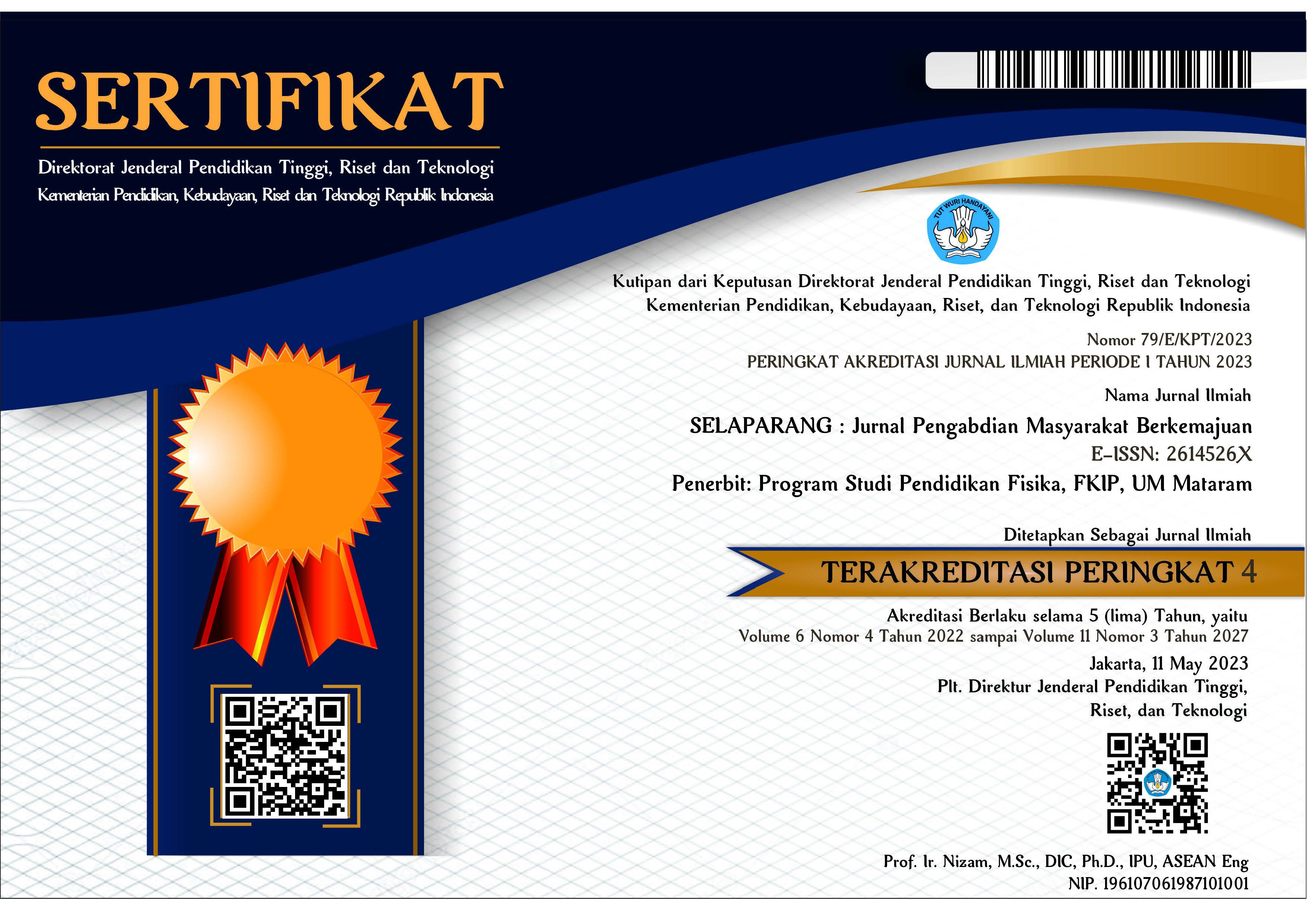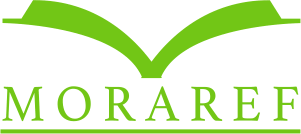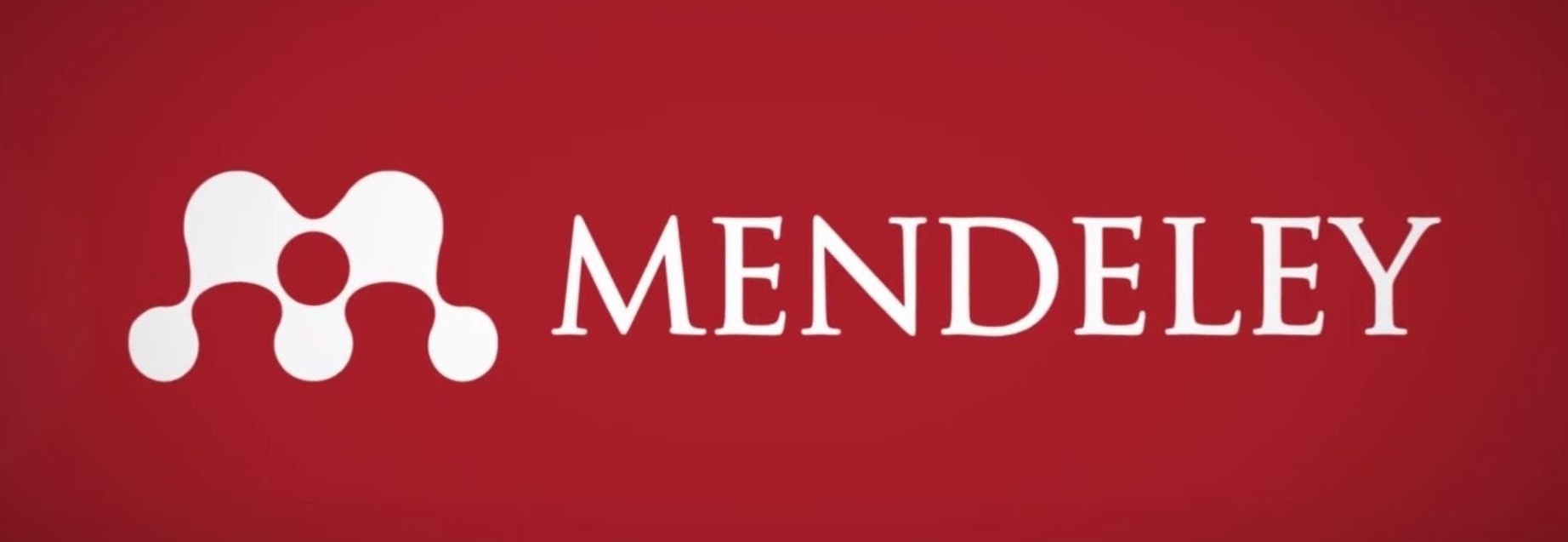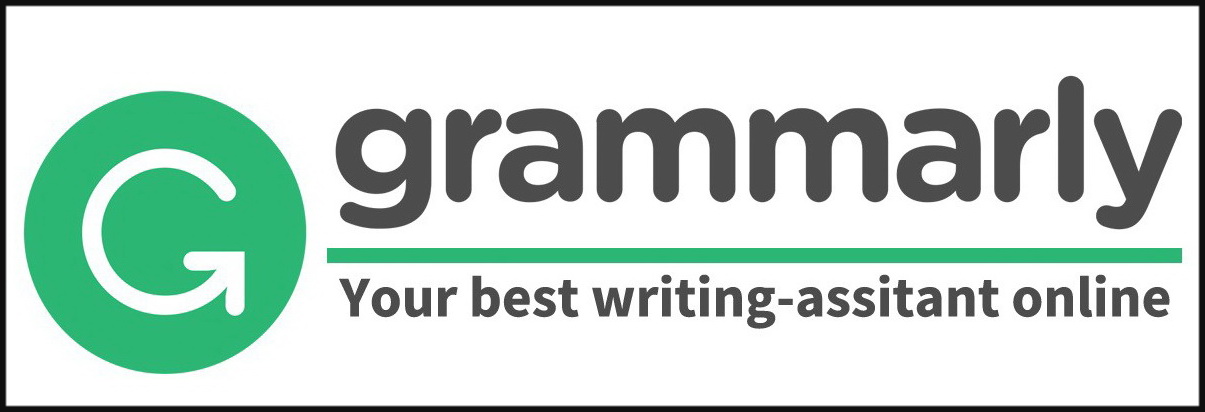Pembentukan peer konselor pada SMAN 1 Gambut dalam penanggulangan masalah kesehatan mental remaja
Abstract
Abstrak
Permasalahan stres di Indonesia masih cukup tinggi bahkan cenderung terus meningkat. Data Riskesdas 2018 menyebutkan prevalensi gangguan mental emosional/stres di Indonesia sebesar 9,8%. Prevalensi kasus stres/depresi di Kalimantan Selatan terus meningkat, kasus tahun 2022 menunjukkan angka 390 orang meningkat dari tahun sebelumnya yang hanya 280 orang. Berdasarkan hasil FGD ditemukan ada beberapa permasalahan terkait dengan kesehatan mental siswa di SMA Negeri 1 Gambut. Tujuan pengabdian untuk meningkatkan pengetahuan siswa SMA Negeri 1 Gambut tentang gangguan mental dan membentuk kelompok konselor sebaya yang telah mendapatkan pelatihan. Metode kegiatan dilaksanakan melalui pendekatan ceramah, diskusi, dan pelatihan berbasis simulasi. Peserta kegiatan yaitu siswa-siswi SMA Negeri 1 Gambut Kecamatan Gambut Kabupaten Banjar. Kegiatan ini dilaksanakan pada tanggal 15 Agustus 2024. Evaluasi hasil kegiatan dalam bentuk pre dan post-tes serta kuesioner kepuasan. Hasil Kegiatan diikuti oleh 28 orang siswa-siswi yang berasal dari kelas X, XI dan XII. Hasil pre-tes menunjukkan nilai pengetahuan tentang kesehatan mental rata-rata 47,5. Setelah diberikan pelatihan skor meningkat menjadi rata-rata 73,2. Terdapat 22 orang peserta yang pengetahuannya meningkat secara signifikan. Hasil tingkat kepuasan menunjukkan 82,14% yang merasa sangat puas dan 17,85% yang merasa puas dengan kegiatan ini. Sebanyak 71,48% menyatakan sangat setuju dan 28,52% setuju kalau pembentukan konselor sebaya dapat membantu remaja mengatasi masalah mereka. Kesimpulan kegiatan ini adalah pelatihan dan pembentukan konselor sebaya kesehatan mental remaja (SeTaRa) sangat dirasakan manfaatnya oleh siswa-siswi SMA Negeri 1 Gambut. Pengetahuan tentang kesehatan mental remaja meningkat setelah pemberian pelatihan.
Kata kunci: kesehatan mental; konselor sebaya; stres
Abstract
The prevalence of stress in Indonesia remains considerable and appears to be on the rise. According to the 2018 Riskesdas data, the prevalence of mental and emotional disorders/stress in Indonesia is 9.8%. Stress and depressive disorders are on the rise in South Kalimantan. In 2022, 390 cases were reported, up from 280 the previous year. The focus group discussions revealed issues regarding student mental health at SMA Negeri 1 Gambut. The service aims to improve students' knowledge of mental disorders and train peer counselors. The activity was conducted using a methodology that combined lectures, discussions, and simulation-based training. The participants in the activity were students from SMA Negeri 1 Gambut, Gambut Subdistrict, Banjar Regency. The activity was conducted on August 15, 2024. The activity's effectiveness was assessed through pre- and post-tests and satisfaction surveys. A total of 28 students took part. The pre-test average knowledge score on mental health was 47.5. After training, the mean score increased to 73.2. Twenty-two participants demonstrated notable knowledge gains. The results of the satisfaction survey indicated that 82.14% of respondents expressed high levels of satisfaction with the activity, while 17.85% indicated satisfaction. A majority of respondents believed that peer counselors could help adolescents overcome problems. The training of SeTaRa counselors at SMA Negeri 1 Gambut was valuable. After the training on adolescent mental health, respondents had more knowledge about it.
Keywords: mental health; peer counselor; stress
Keywords
Full Text:
PDFReferences
Baroroh, E., & Amalia, K. (2023). Peer Counseling Training to Improve The Competence of Sophomore Peer Counselors. Al-Balagh : Jurnal Dakwah Dan Komunikasi, 8, 1–40. https://doi.org/10.22515/albalagh.v8i1.5833
Blakemore, S.-J. (2019). Adolescence and Mental Health. The Lancet, 393(10185), 2030–2031. https://doi.org/10.1016/S0140-6736(19)31013-X
Blasberg, J. U., Kanske, P., Böckler, A., Trautwein, F.-M., Singer, T., & Engert, V. (2022). Associations of Social Processing Abilities with Psychosocial Stress Sensitivity. Comprehensive Psychoneuroendocrinology, 12, 100159. https://doi.org/10.1016/j.cpnec.2022.100159
Degering, M., Linz, R., Puhlmann, L. M. C., Singer, T., & Engert, V. (2023). Revisiting The Stress Recovery Hypothesis: Differential Associations of Cortisol Stress Reactivity and Recovery After Acute Psychosocial Stress with Markers of Long-Term Stress and Health. Brain, Behavior, & Immunity - Health, 28, 100598. https://doi.org/https://doi.org/10.1016/j.bbih.2023.100598
Eiland, L., & Romeo, R. D. (2013). Stress and The Developing Adolescent Brain. Neuroscience, 249, 162–171. https://doi.org/10.1016/j.neuroscience.2012.10.048
Fitri, E., Zola, N., & Ifdil, I. (2018). Profil Kepercayaan Diri Remaja serta Faktor-Faktor yang Mempengaruhi. JPPI (Jurnal Penelitian Pendidikan Indonesia), 4(1), 1–5. https://doi.org/10.29210/02017182
Kementrian Kesehatan. (2023). Survei Kesehatan Indonesia (SKI) 2023. In Survei Kesehatan Indonesia (SKI) 2023. Jakarta: Kementrian Kesehatan RI. Retrieved from https://www.badankebijakan.kemkes.go.id/ski-2023-dalam-angka/
Khasanah, S. M. R., & Mamnuah. (2021). Tingkat Stres Berhubungan dengan Pencapaian Tugas Perkembangan pada Remaja. Jurnal Ilmu Keperawatan Jiwa, 4(1), 107–116.
Kim, E. J., & Kim, J. J. (2023). Neurocognitive Effects of Stress: A Metaparadigm Perspective. Molecular Psychiatry, 28(7), 2750–2763. https://doi.org/10.1038/s41380-023-01986-4
Liu, Q., Jiang, M., Li, S., & Yang, Y. (2021). Social Support, Resilience, and Self-Esteem Protect Against Common Mental Health Problems in Early Adolescence: A Nonrecursive Analysis from a Two-Year Longitudinal Study. Medicine, 100(4), e24334. https://doi.org/10.1097/MD.0000000000024334
Lupien, S. J., Leclaire, S., Majeur, D., Raymond, C., Jean Baptiste, F., & Giguère, C.-E. (2022). “Doctor, I am So Stressed Out!” A Descriptive Study of Biological, Psychological, and Socioemotional Markers of Stress in Individuals Who Self-Identify as Being “Very Stressed Out” or “Zen”. Neurobiology of Stress, 18, 100454. https://doi.org/10.1016/j.ynstr.2022.100454
McEwen, B. S. (2017). Neurobiological and Systemic Effects of Chronic Stress. Chronic Stress (Thousand Oaks, Calif.), 1. https://doi.org/10.1177/2470547017692328
Pagerols, M., Prat, R., Rivas, C., Español-Martín, G., Puigbó, J., Pagespetit, È., … Bosch, R. (2022). The Impact of Psychopathology on Academic Performance in School-Age Children and Adolescents. Scientific Reports, 12(1), 4291. https://doi.org/10.1038/s41598-022-08242-9
Rahmawaty, F., Silalahi, R. P., T, B., & Mansyah, B. (2022). Faktor-Faktor yang Mempengaruhi Kesehatan Mental pada Remaja. Jurnal Surya Medika (JSM), 8(3), 276–281. https://doi.org/https://doi.org/10.33084/jsm.vxix.xxx
Ramli, M., Saputra, N. M. A., Mulawarman, & Latif, S. (2024). Peer Counseling in the Service of Student Learning Problems: A Study of School Counselor Needs. Atlantis Press SARL. https://doi.org/10.2991/978-2-38476-234-7_8
Sari, M. (2022). Jumlah Orang Depresi di Kalimantan Selatan Meroket di 2022. Tribunnews. Retrieved from https://banjarmasin.tribunnews.com/2022/04/16/jumlah-orang-depresi-di-kalimantan-selatan-meroket-di-2022
Seo, D., Rabinowitz, A. G., Douglas, R. J., & Sinha, R. (2019). Limbic Response to Stress Linking Life Trauma and Hypothalamus-Pituitary-Adrenal Axis Function. Psychoneuroendocrinology, 99, 38–46. https://doi.org/10.1016/j.psyneuen.2018.08.023
Topping, K. J. (2022). Peer Education and Peer Counselling for Health and Well-Being: A Review of Reviews. International Journal of Environmental Research and Public Health, 19(10). https://doi.org/10.3390/ijerph19106064
DOI: https://doi.org/10.31764/jpmb.v8i4.27144
Refbacks

This work is licensed under a Creative Commons Attribution-ShareAlike 4.0 International License.
______________________________________________________
Jurnal Selaparang
p-ISSN 2614-5251 || e-ISSN 2614-526X
EDITORIAL OFFICE:



















